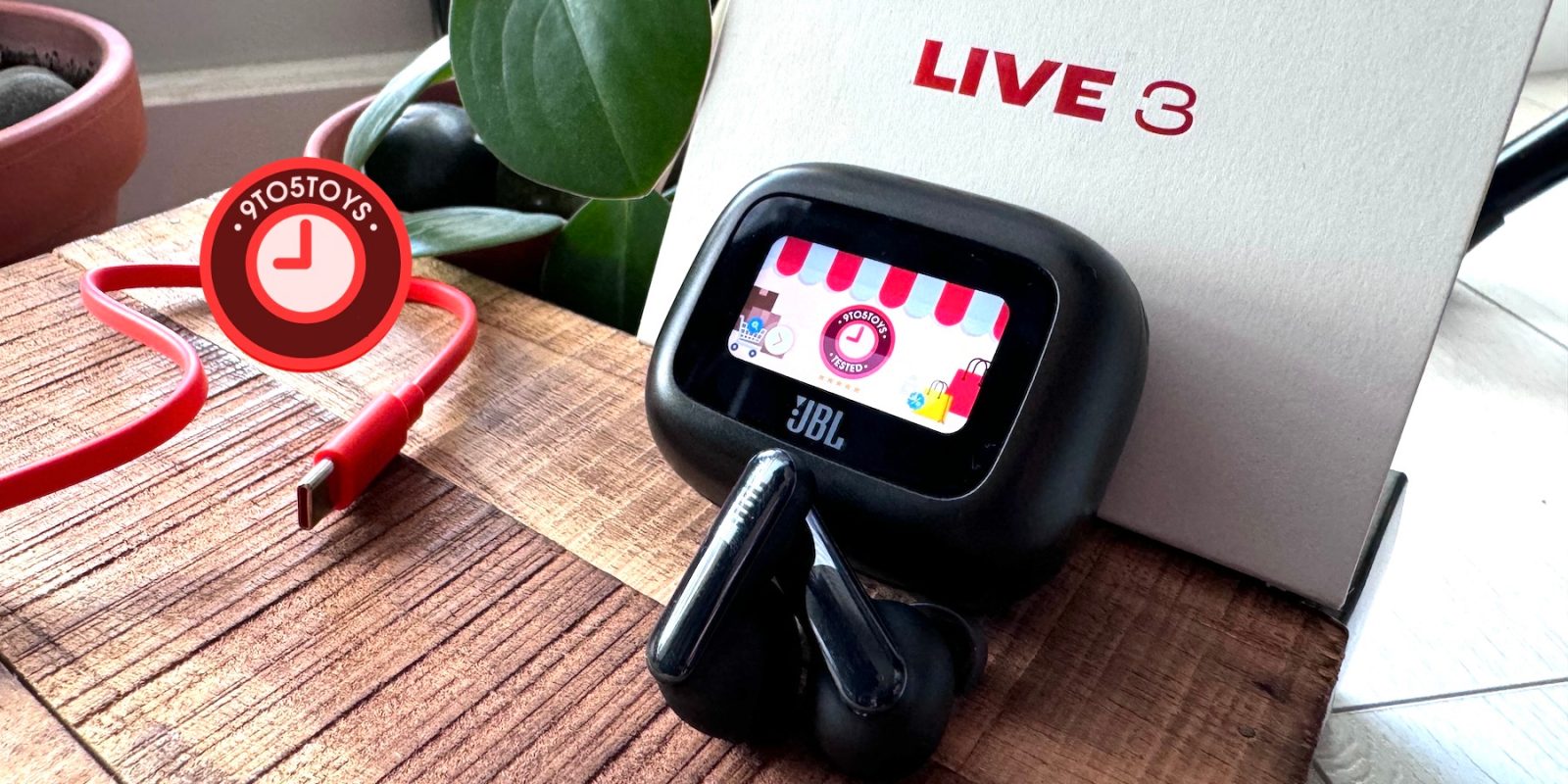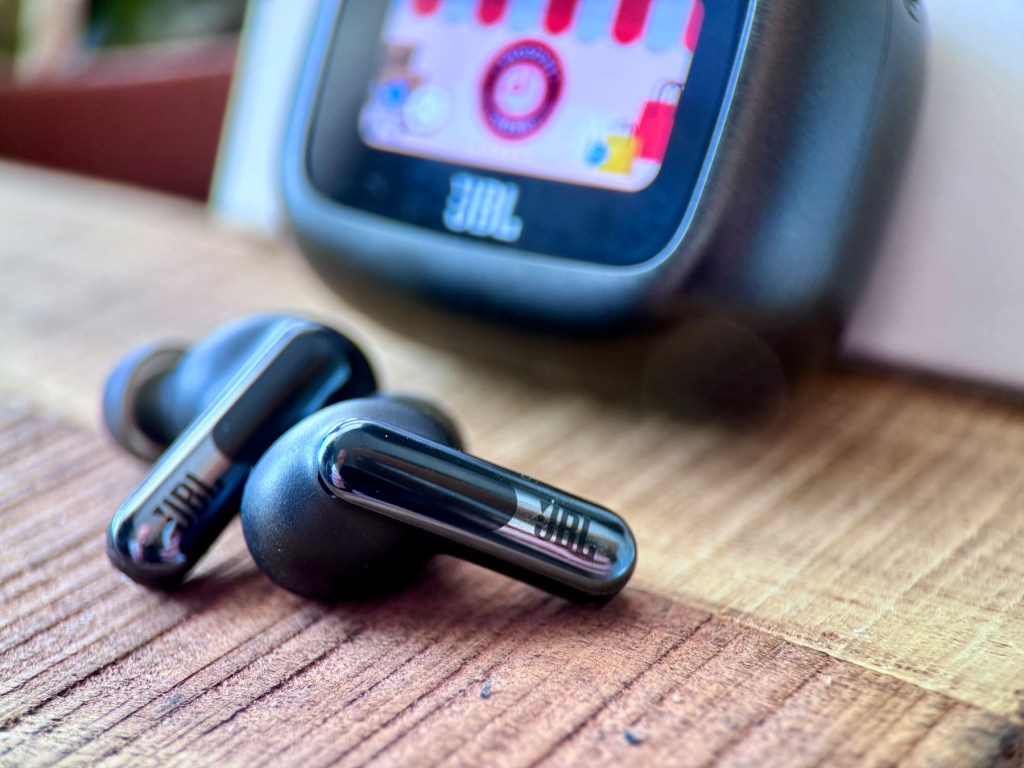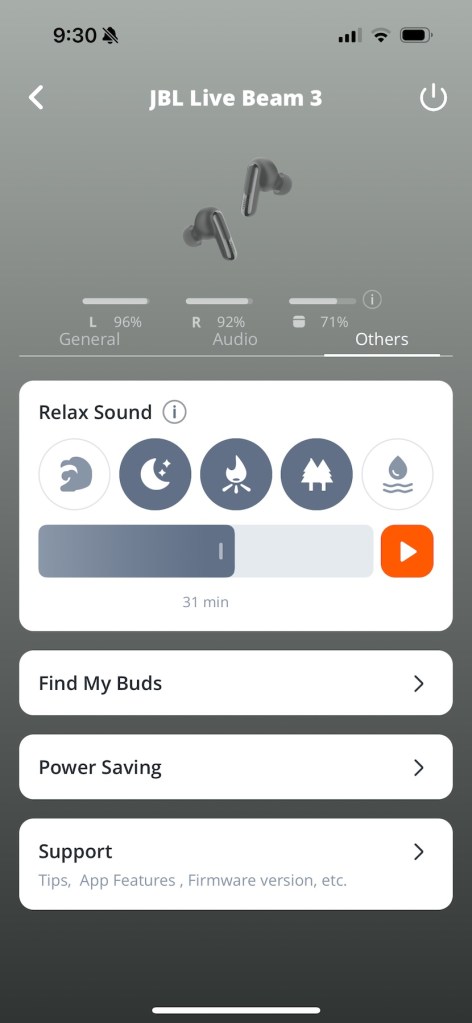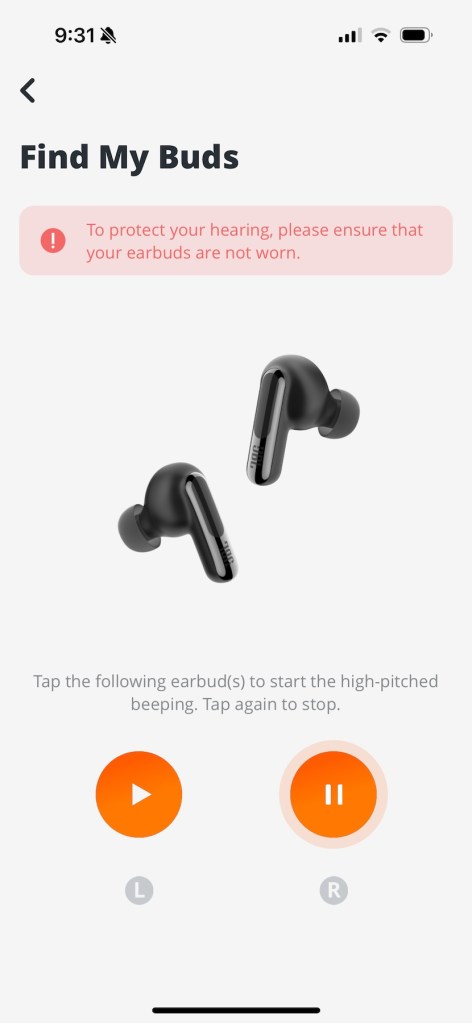
Today we are taking a hands-on look at the new JBL Live Beam 3 earbuds that were unveiled earlier this year. This time landing with a more AirPods Pro-like form-factor, the noise cancelling action also joins the brand’s latest iteration of its Smart Charging Case complete with an onboard touchscreen. The question is whether or not it’s just a gimmick, and if the sound experience can hold up to the $200 price tag. Head below for a closer look and some hands-on impressions.
JBL Live Beam 3 earbuds review
The JBL Live Beam 3 earbuds are the brand’s latest release with the touchscreen charging case, similar to what we saw on the JBL Tour Pro 2 set but at a lower price point. The JBL Live Beam 3 debuted earlier this year alongside the Buds and Flex – all three include the touchscreen case, the True Adaptive Noise Cancelling, spatial audio, LDAC Hi-Res Audio (if your phone supports it) and multi-point connectivity. The Buds and Beam up the water-resistance to IP55 with 10mm dynamic drivers while the Flex feature 12mm sound makers alongside varying levels of mostly all quite impressive battery life: 40 hours on the Buds, up to 48 hours on the Beam, and 50 on the Flex. I have only had a chance to test out the JBL Live Beam 3, but much of these impressions will clearly apply across the lineup.
The JBL Live Beam 3 are available in four color options (Black, Blue, Purple, Silver) and retail for $199.99 shipped.

Features at a glance:
- Smart Charging Case with 1.45-inch touchscreen
- True adaptive noise cancelling
- Six beamforming microphones reduce wind and noise interference
- 48 hours total playback
- 10-minute USB-C charging for another 4 hours of playtime
- Wireless charging
- Multi-point Bluetooth connection
- IP55 waterproof and dustproof
- 10mm dynamic drivers
- Four colors options: Black, Blue, Purple, Silver
- Onboard Google Finder service and Google Audio Switch

Touchscreen charging case
I guess the most obviously novel aspect of the new JBL Live Beam 3 is the charging case. It houses and charges your buds, just like you would assume (it too can be charged wirelessly on a traditional Qi pad), but it also comes equipped with a touchscreen display on the front. It, as you can see from the images here, features a customizable lock screen – you can put whatever image you want on there – and the usual battery life stats and the like, as well as just about every aspect and feature found inside the companion app. There are customizable quick access screens for the spatial audio controls, ANC and aware mode, find my buds, audio playback controls, the custom EQ curves, and even the flashlight mode (it just floods the display with a bright white to deliver some illumination when needed – it’s just okay). You can even allow it to display incoming texts and notifications you are getting on your smartphone and choose which of these features to display on the touchscreen or not.
The whole touchscreen experience is pretty cool – I have had a blast messing around with it and uploading images onto it and what not. I’m just not sure how useful any of it is. I guess it’s nice to be able to engage/disengage and adjust things like the ANC and Aware mode, and it, perhaps, is convenient to flip through tunes or check the battery life for some folks, all of which without needing to pull out your phone. But again I’m not sure how many users have their earbuds charging case on their person in such a way that it is more convenient than just pulling out the smartphone you almost certainly have in your pocket.
Some of the features accessible on the touchscreen can be triggered from the touch controls on the buds themselves, albeit without the visual feedback, but this seems an infinitely more practical solution to me. There’s a reason brands have been offering these features for years – tapping your ear instead of pulling out your phone is certainly more convenient and useful, but tapping the touchscreen on the case instead of your smartphone, perhaps not so much.
Some users will certainly appreciate it, and it looks super cool, but you can likely already imagine if this will be useful for you or not. And having said all of this, I’m not sure it really matters how useful it is, the headphones sound great, the ANC works well, and the touchscreen is awesome-looking.


On-bud Touch Controls
The touch controls on the buds themselves work nicely – they are less finicky than the Soundgear open JBL buds I reviewed recently. One small caveat here, although not one I personally had much of an issue with, is that you can only assign two sets of controls, one per bud. In other words you can have touch controls accessible for the ANC/Aware modes, the play back control, and the volume, but not all three. Perhaps it could have been nice if JBL figured out a way to have more than just two options here, (you can choose which you want from within the app for each ear), but for me personally, volume and playback are really all I ever use, pulling out the phone or touchscreen case to adjust/engage other functions is just fine for me. And you always have access to Siri with a long press, while incoming call controls are contextual and at the ready when you’re receiving one anyway.

Smart Talk
The Smart Talk feature is a good one. With it engaged, the JBL Live Beam 3 will automatically understand when you start talking, and automatically mute your music (not pause it) – it has worked flawlessly for me. You can choose to to have your music come back to life after you have stopped talking or finished your conversation within 5 seconds, 15 seconds, or 20 seconds. I quite like this feature, but I do wish it paused playback as opposed to just muting it for the time being.
Google Finder
Access to the Google Finder network is onboard here. You can use JBL’s find my action – make either of the buds play quite a loud alarm to help you track them down audibly – but there’s also Google Finder action here so the network of over “3 million Android devices will automatically help you” track down your missing buds. Google has dealt with some critics here, but it is only bound to get better and better over time by my estimation.
And while we are talking Google integration here, this set also features Google Audio Switch so you can quickly and easily switch from one Android Bluetooth device to another seamlessly.


Relax Sound
One feature I thought I would overlook and mostly ignore is the Relax Sound. But I’m kind of loving it. From within the companion app you’ll find the Relax Sound area – this is where you can play relaxing sounds of nature. You can set a playback duration, from 3 minutes to an hour, and create your own mix. There are audio stems you can turn on and off as you please to make your mix – waves, night time crickets, crackling campfire, chirping birds, and a babbling brook. It’s nothing groundbreaking of course, but it’s fun, and I love being able to mix and match between the various tones and sounds.
Adaptive noise cancellation
Another thing worth mentioning here when it comes to sound is the lack there of, adaptive noise cancellation. Okay, so it’s not quite as perfect as $300+ (or much more) over ear headphones, it’s not quite as solid $290 AirPods Pro 2, but it is good. In fact, I’d say it worked better for me than most reviewers have suggested. All but the loudest, out of nowhere, sounds are blocked out – the adaptive setting sort of takes care of things for, auto adjusting to the conditions around you and it does it quite well. It’s not perfect, but it has been my setting of choice and one that certainly gets the job done on par with most buds I have tested in this price range.
Overall sound quality impressions
Sound quality is essentially a personal thing, so my thoughts, as per usual with these sorts of reviews, aren’t exactly the most helpful to everyone. Having said that, the JBL Live Beam 3 sound great to me. I generally always prefer the flat sound response without messing with the customizable EQ, and that again rings true on the Beams. You can get the bass pumping much harder with the EQ and, alternatively, get it out of the way when needed as well. The spatial audio response couldn’t quite keep up in terms of delivering that 3D experience, but it does work and is frankly just fine – my impressions are most folks likely won’t even notice that it isn’t quite as good as AirPods Pro 2 without a direct A/B comparison.
All-in-all, these JBL buds sound about as good I could have hoped at $200, easily rivaling just about every set I have tested out in the price range and coming very close to the more pricey AirPods Pro 2 and expensive Bose sets. The spatial leaves a a bit to be desired, but not much, and adaptive noise cancellation does what it ought to for me.
Buy the JBL Live Beam 3
FTC: We use income earning auto affiliate links. More.








Comments